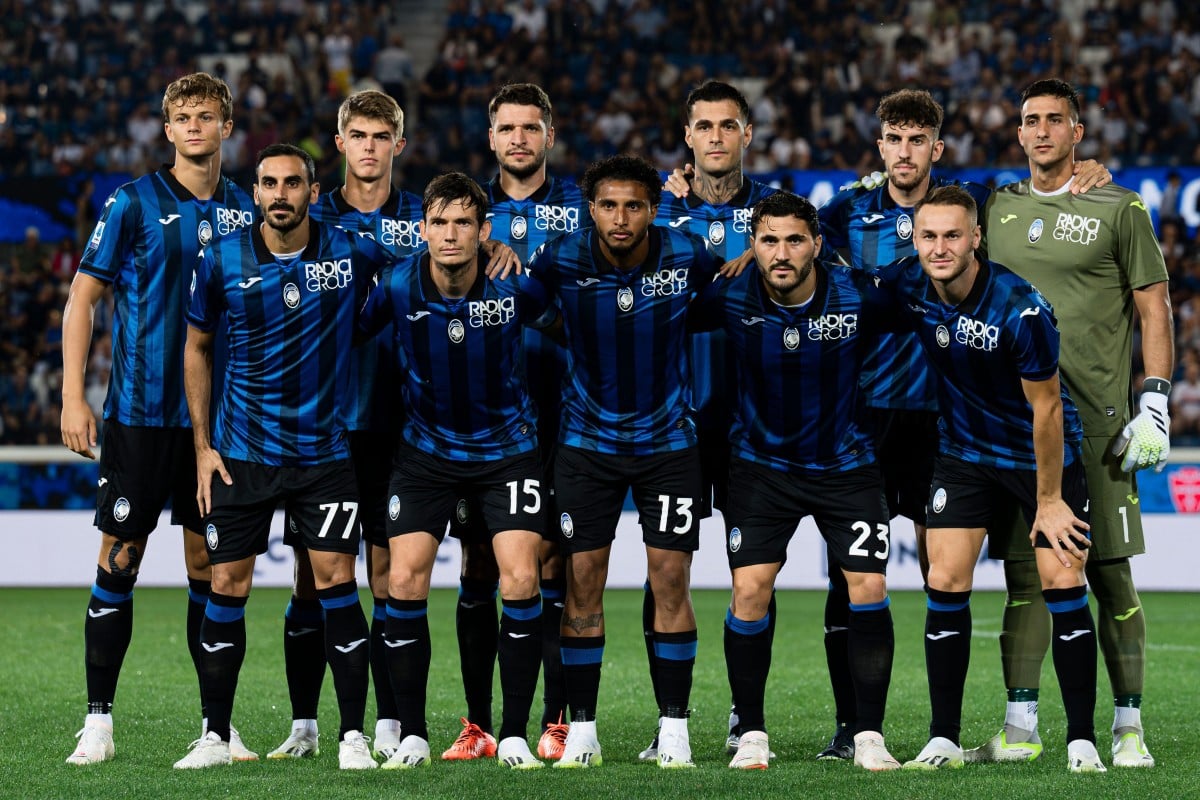Join us on an enthralling journey into the captivating world of Atalanta, the legendary huntress renowned for her unmatched speed, unwavering determination, and fierce independence. Dive into her extraordinary story, where mythology, literature, and modern culture intertwine to reveal the enduring legacy of a woman who dared to defy societal norms.
From her humble origins in Greek mythology to her enduring presence in contemporary art, literature, and activism, Atalanta’s tale continues to inspire and empower women around the globe. Prepare to be captivated as we explore the depths of her character, unravel the symbolism behind her myth, and uncover the countless ways she has left an indelible mark on our collective imagination.
Origins and Mythology
Atalanta, a renowned figure in Greek mythology, emerged from the ancient realm of Arcadia. According to legend, she was the daughter of Iasus and Clymene, a couple blessed by Zeus. As a child, Atalanta was abandoned on Mount Parthenion, where she was miraculously nursed by a she-bear. This unusual upbringing instilled in her a fierce independence and a deep connection to the wild.
Parentage and Upbringing
- Daughter of Iasus and Clymene
- Abandoned on Mount Parthenion
- Raised by a she-bear
Association with Artemis
As Atalanta grew, she became a skilled huntress, earning the favor of Artemis, the goddess of the hunt. With Artemis as her mentor, Atalanta honed her archery skills and became an exceptional tracker. She vowed to remain unmarried, dedicating her life to the goddess and the pursuit of the hunt.
Physical Attributes and Abilities
Atalanta, the legendary huntress of Greek mythology, possessed an unparalleled physical prowess that set her apart from her peers. Her athletic build and graceful movements were a testament to her years of rigorous training and unwavering determination.
Exceptional Speed and Agility
Atalanta’s speed was unmatched, rivaling that of the wind or a cheetah. She could effortlessly outrun her opponents, leaving them trailing far behind in her wake. Her agility was equally impressive, allowing her to dodge obstacles with ease and leap over towering hurdles with astonishing grace.
Unparalleled Skills as an Archer and Huntress
As an archer, Atalanta’s precision and accuracy were legendary. Her arrows never missed their mark, piercing through the air with deadly force. Her hunting skills were equally remarkable, as she could track and capture even the most elusive prey with unwavering determination.
Endurance and Stamina
Atalanta’s endurance and stamina were unmatched. She could outrun and outlast her opponents, enduring long hours of relentless pursuit without faltering. Her unwavering determination and physical resilience made her a formidable adversary.
Athletic Prowess
Atalanta’s athletic prowess was evident in every aspect of her being. She could leap over obstacles with the agility of a gazelle, dodging arrows mid-flight with the reflexes of a seasoned warrior. Her strength and coordination were equally impressive, allowing her to overcome any physical challenge that came her way.
Character and Personality

Atalanta possessed an unwavering spirit, fiercely independent and strong-willed. She refused to conform to societal expectations, boldly challenging the norms of her time.
Pride and Determination
Atalanta’s pride was evident in her unwavering belief in her abilities. She excelled in hunting, surpassing even the most skilled men. Her determination was unyielding, driving her to achieve her goals regardless of obstacles.
Resolve to Remain Unmarried and Chaste, Atalanta
Atalanta made a solemn vow to remain unmarried and chaste, a decision that defied the traditional roles assigned to women in her society. She believed in her own strength and independence, refusing to be defined by relationships or societal expectations.
Role in the Argonautic Expedition: Atalanta
Atalanta’s inclusion in the Argonautic Expedition, a legendary quest for the Golden Fleece, was a testament to her exceptional skills and unwavering determination. As the only female member of the crew, she proved to be a formidable asset, contributing her hunting prowess, athleticism, and strategic thinking to the arduous journey.
Her interactions with Jason, the leader of the Argonauts, were marked by mutual respect and admiration. Atalanta’s independent nature and combat abilities earned her the respect of Jason and his crewmates, who recognized her as a valuable ally. She shared her knowledge of the wilderness, providing guidance and sustenance during the expedition’s treacherous passages.
Adventures and Contributions
Atalanta’s contributions to the Argonautic Expedition were numerous and significant. She played a pivotal role in the hunt for the Calydonian Boar, a formidable beast that had terrorized the countryside. Her swiftness and archery skills proved instrumental in subduing the monstrous creature.
During the expedition’s encounter with the Harpies, monstrous bird-like creatures, Atalanta’s agility and quick reflexes enabled her to evade their attacks and protect her fellow Argonauts. Her unwavering spirit and determination inspired the crew during challenging moments, reminding them of the importance of perseverance and teamwork.
– Legacy and Impact

Atalanta’s legacy as a symbol of female empowerment and independence has endured for centuries. Her story has inspired countless women and girls throughout history, and she continues to be a role model for those who seek to challenge gender norms and stereotypes.
Atalanta’s influence can be seen in literature, art, popular culture, and feminist movements. She has been the subject of numerous books, poems, plays, and films. Her image has been used in art and advertising to represent strength, courage, and independence. And her story has been used by feminists to argue for the equality of women.
Finish your research with information from Enseignants heures supplémentaires.
– Literature
Atalanta has been a popular subject of literature for centuries. She appears in the works of Homer, Ovid, and Sophocles. In recent years, she has been the subject of several novels and short stories, including Madeline Miller’s Circe and Pat Barker’s The Silence of the Girls.
– Art
Atalanta has also been a popular subject of art. She has been depicted in paintings, sculptures, and mosaics. Some of the most famous depictions of Atalanta include the statue of Atalanta and Hippomenes by Antonio Canova and the painting of Atalanta and the Calydonian Boar by Peter Paul Rubens.
– Popular Culture
Atalanta has also appeared in popular culture. She has been featured in films, television shows, and video games. Some of the most famous portrayals of Atalanta include the character of Xena in the television series Xena: Warrior Princess and the character of Artemis in the video game Smite.
– Feminist Movements
Atalanta has been a powerful symbol for feminist movements. Her story has been used to argue for the equality of women and to challenge gender stereotypes. Atalanta’s legacy continues to inspire women and girls today, and she remains a symbol of female empowerment and independence.
Symbolism and Interpretation
Atalanta’s story is rich in symbolism and interpretation, reflecting the complex societal attitudes towards women in ancient Greece. Her swiftness and prowess in hunting represent female independence and strength, while her refusal to conform to traditional gender roles challenges the prevailing norms.
Representation of Female Empowerment
- Atalanta’s refusal to marry and her insistence on pursuing her own goals symbolize female agency and self-determination.
- Her success in hunting, traditionally a male-dominated activity, demonstrates her ability to excel in traditionally masculine spheres.
- Her role as a key member of the Argonauts, a group of heroes, further reinforces her status as an equal to men.
Influence on Female Characters
Atalanta’s story has inspired and influenced the development of other female characters in mythology and literature. Her strength and independence serve as a model for later female heroes, such as Artemis, the goddess of the hunt, and Penthesilea, the Amazon queen.
You also can investigate more thoroughly about Rebel Wilson to enhance your awareness in the field of Rebel Wilson.
Reflection of Societal Attitudes
Atalanta’s story also reflects the social and cultural attitudes towards women in ancient Greece. Her exceptional abilities and defiance of gender norms were both admired and feared, revealing the ambivalence with which women’s power was often viewed.
Atalanta in Literature
Atalanta, the swift-footed huntress, has captured the imagination of writers for centuries. Her character has been portrayed in various literary works, each offering a unique interpretation of her legend.
The table below compares Atalanta’s portrayal in two prominent works of ancient Greek literature: Ovid’s Metamorphoses and Apollonius of Rhodes’ Argonautica.
Character Portrayal
| Characteristic | Ovid’s Metamorphoses | Apollonius of Rhodes’ Argonautica |
|---|---|---|
| Origin | Daughter of Iasus and Clymene | Daughter of Schoeneus, King of Arcadia |
| Reason for vow of chastity | To escape an unwanted marriage | To honor Artemis, the goddess of the hunt |
| Race with Hippomenes | Defeated by Hippomenes’ golden apples | Defeated by Meleager’s intervention |
| Fate | Transformed into a lioness | Married Meleager and had children |
While there are some similarities in the two portrayals, there are also notable differences. Ovid’s Atalanta is more independent and assertive, while Apollonius’ Atalanta is more submissive and traditional.
Atalanta in Art
Atalanta, the swift-footed huntress, has been immortalized in art throughout history. Her image has graced Greek vase paintings, Renaissance sculptures, and modern-day illustrations, reflecting the enduring fascination with her legend and athleticism.
The earliest depictions of Atalanta date back to the 6th century BC, appearing on Greek pottery and vase paintings. These images portray her as a young woman, often wearing a short tunic and carrying a bow and arrow. She is typically depicted in motion, running or hunting, emphasizing her speed and agility.
Evolution of Representation
Over time, the representation of Atalanta in art evolved. During the Renaissance period, artists such as Titian and Guido Reni depicted her as a more idealized figure, with a graceful and sensual form. In these works, she is often shown with flowing hair, wearing elegant drapery, and surrounded by lush landscapes.
In the 19th century, artists began to explore more dynamic and expressive depictions of Atalanta. The French sculptor Antoine-Louis Barye created a bronze statue of her in 1833, capturing her in mid-stride, with her bow drawn and an arrow poised to be released. This work emphasizes her strength and determination.
Artistic Styles
The artistic styles used to portray Atalanta have also varied over time. Greek vase paintings often used a simple, linear style, with figures depicted in profile. Renaissance artists employed a more naturalistic approach, with attention to detail and shading. In modern art, artists have experimented with a wide range of styles, from abstract to realistic, to capture the essence of this legendary figure.
Atalanta in Video Games

Atalanta, the swift-footed huntress, has made her mark in the realm of video games, appearing in various titles as a playable character or a compelling NPC.
Playable Character
In several video games, players have the opportunity to embody the legendary Atalanta and wield her bow and arrows with precision.
- Fate/Grand Order (2015): A mobile role-playing game where Atalanta serves as a playable Archer-class servant, known for her agility and devastating critical hits.
- Smite (2014): A third-person multiplayer online battle arena where Atalanta is a playable Hunter, excelling in swift movement and long-range attacks.
- World of Warcraft (2004): A massively multiplayer online role-playing game where Atalanta appears as a raid boss in the Temple of Atal’Hakkar, challenging players with her unmatched speed and archery skills.
Non-Playable Character
Even when not directly playable, Atalanta’s presence in video games enriches the narrative and lore.
- Assassin’s Creed Odyssey (2018): An action role-playing game where Atalanta plays a pivotal role in the Daughters of Artemis questline, guiding the protagonist through a series of challenges that test their hunting prowess.
- Hades (2020): A roguelike dungeon crawler where Atalanta appears as a supportive NPC, offering guidance and encouragement to the protagonist, Zagreus.
Historical Accuracy and Representation
Atalanta’s portrayal in video games varies in terms of historical accuracy. While some games strive to capture her mythical attributes, others adapt her story for creative purposes.
For example, in Fate/Grand Order, Atalanta’s agile and independent nature aligns with her mythological origins. However, her role as a servant in the game is a unique interpretation of her character.
Diversity and Representation
Atalanta’s inclusion in video games contributes to the representation of strong and skilled female characters. Her presence challenges traditional gender roles and showcases the diversity of female characters in gaming.
Atalanta in Modern Culture

In modern times, Atalanta has emerged as a potent symbol of female empowerment and women’s rights, inspiring countless works of art, literature, and activism.
Atalanta’s Influence on Feminist Movements
Atalanta’s image has been used extensively in feminist protests, rallies, and awareness campaigns. Her story has resonated with women who see her as a symbol of strength, independence, and determination.
- In the 1970s, the feminist group “Atalanta” used her name as a symbol of their commitment to women’s rights and equality.
- In 2017, the “Atalanta Project” was launched to provide support and resources to female survivors of sexual assault.
- The “Atalanta Run” is an annual event held in various cities to raise awareness about gender-based violence and promote women’s empowerment.
Atalanta in Modern Art and Literature
Atalanta’s story has also been reinterpreted and depicted in various forms of modern art and literature.
- The novel “The Song of Atalanta” by Judith Guest explores Atalanta’s life and her struggles against societal expectations.
- The play “Atalanta” by Maxine Peake tells the story of a young woman who takes on the role of Atalanta in a community theater production, finding inspiration in the character.
- The painting “Atalanta and the Golden Apples” by Sir Edward Burne-Jones depicts Atalanta as a powerful and independent woman, defying traditional gender roles.
Evolution of Atalanta’s Portrayal
The portrayal of Atalanta in modern culture has evolved over time, reflecting changing societal values and perspectives.
In the 20th century, Atalanta was often depicted as a fierce and competitive athlete, highlighting her physical prowess and determination.
In the 21st century, her portrayal has shifted towards emphasizing her intelligence, independence, and strength of character.
Table: Atalanta as a Symbol of Female Empowerment
| Context | Medium | Impact |
|—|—|—|
| Feminist protests | Symbol of strength and independence | Inspired activism and raised awareness |
| Modern literature | Exploration of female identity and empowerment | Provided new perspectives on Atalanta’s story |
| Contemporary art | Depiction of Atalanta as a powerful and defiant woman | Challenged traditional gender roles and celebrated female agency |
Atalanta’s Relevance Today
Atalanta continues to resonate with women today because her story embodies qualities that are highly valued in modern society, such as strength, determination, and independence.
Her story inspires women to embrace their own power, challenge societal expectations, and strive for their goals, regardless of gender or background.
Atalanta in Sports
Atalanta’s name and image have become synonymous with athleticism, particularly in women’s sports. She serves as a mascot and symbol for numerous sports teams, embodying the values of speed, agility, and determination.
Women’s Athletics
Atalanta’s association with women’s athletics is particularly strong. Her story of overcoming obstacles and competing on equal terms with men resonates with female athletes. Many women’s sports teams have adopted Atalanta as their mascot, including the Atalanta Track Club in California, the Atalanta Volleyball Club in Italy, and the Atalanta Hockey Club in Finland.
Significance of Her Attributes
Atalanta’s speed, agility, and determination are qualities highly valued in sports. Her ability to outrun her opponents symbolizes the potential for women to excel in athletic endeavors. Her unwavering determination inspires athletes to push their limits and strive for success.
Atalanta in Geography
Atalanta, the swift-footed huntress of Greek mythology, has left her mark on the geographical landscape. From cities to mountains, rivers to landmarks, her name echoes through the ages, connecting us to her legendary story.
The table below provides a comprehensive overview of locations named after Atalanta, exploring their historical or mythological significance, current status, and notable features:
Locations Named After Atalanta
| Location Name | Type | Significance | Description |
|---|---|---|---|
| Atalanta, Italy | City | Founded by Arcadian colonists who named it after their mythical ancestress | A small town in the province of Bergamo, known for its medieval architecture and proximity to the Bergamo Alps |
| Mount Atalanta, Greece | Mountain | Believed to be the site where Atalanta defeated the Calydonian Boar | A 1,330-meter peak in the Peloponnese region, offering panoramic views of the surrounding countryside |
| Atalanta, Russia | River | Named after the Greek goddess of the hunt | A tributary of the Volga River, flowing through the Penza Oblast and emptying into the Sura River |
| Atalanta Park, Canada | Park | Dedicated to the memory of the legendary huntress | A 10-hectare park in the city of Barrie, Ontario, featuring a playground, picnic areas, and a nature trail |
| Atalanta, United States | Town | Established in 1871 and named after the Greek heroine | A small town in Jasper County, Georgia, known for its antebellum architecture and proximity to the Ocmulgee River |
Final Thoughts

Atalanta’s legacy as a symbol of female strength, resilience, and independence remains as potent today as it was in ancient times. Her story serves as a timeless reminder of the indomitable spirit that resides within all women, encouraging us to embrace our own power and forge our own paths in a world that often seeks to define us.
As we bid farewell to the captivating world of Atalanta, let us carry her spirit with us, drawing inspiration from her unwavering determination to challenge societal norms and live life on our own terms. May her story continue to inspire generations to come, empowering them to embrace their own unique journeys with courage, grace, and an unyielding belief in their own abilities.